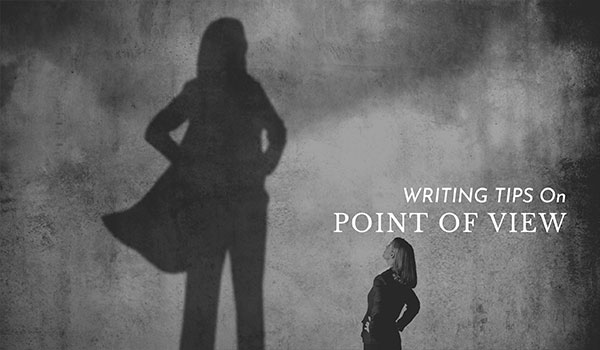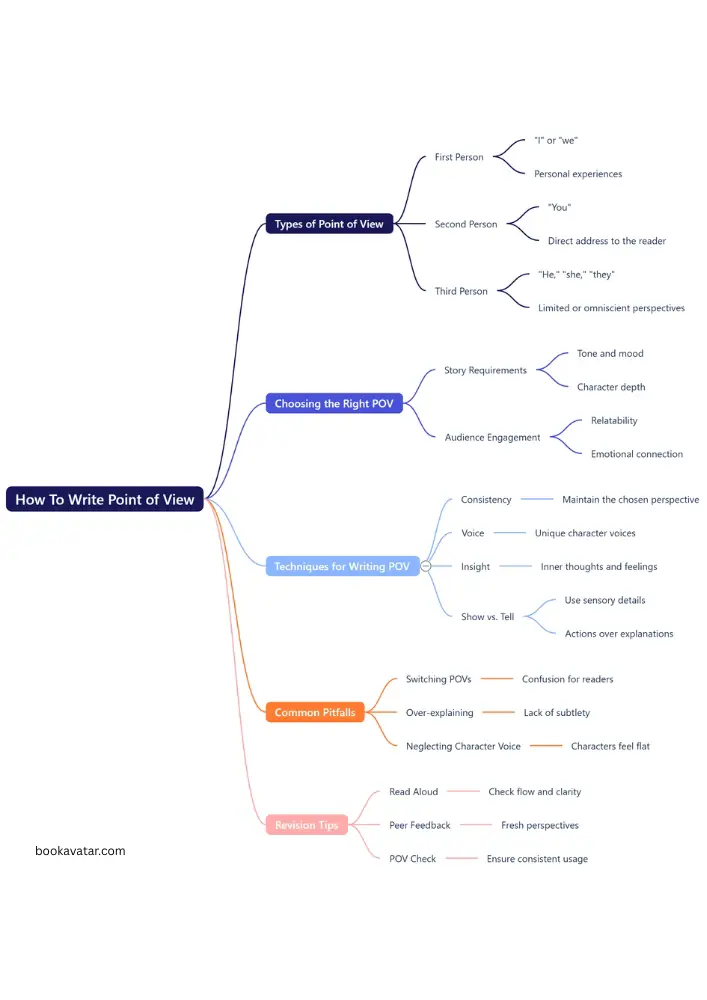
Point of view is the perspective or eyes a story is told from. The narrator is the person who tells the story. The point of view includes everything that the narrator sees from the angle of her eyes. When writing fiction, point of view is everything. It determines how the reader will experience the story, which characters they get the most invested in, and which characters they connect the most with. As a structural book editor, I am constantly evaluating and analyzing the point of view in every story that I work with.
In some cases, it’s something that writers should be aware and conscious of from the very beginning of their story. You want to keep your point of view in mind, whether in the midst of writing the story or somewhere along the revision process.
First-person, second-person, third-person close, third person omniscient. Which one is best? Which one should you choose? Obviously, there are pros and cons to all of these, but we’ll discuss the options and figure out what point of view is best for your story.
How to write point of view? (With Choosing Ideas)
In fictional writing, point of view is the narrator’s position in relation to the story being told. First-person is the most comfortable viewpoint for first-time writers. When you’re writing in the first person point of view, you’re coming from the perspective of the “one” character. So everything is coming through the eyes of that character.

Some pros are that you have an intimate relationship between the reader and the writer because you’re deep into the mindset of that particular character. Some of the cons are that sometimes it’s challenging to get the perspective or the feelings and thoughts of other characters within the story because everything comes from the viewpoint of that “one” character.
Also, describing the main character can be difficult because they tell the story themselves. So with the third person point of view, the narrator will explain exactly what the characters do and what happens to them.
The main thing you want to consider when thinking about the point of view for your story is what is the expectation of the genre that you write in. The reason why that’s so important is that you want to stay within what the majority of people are doing and have proven to be successful.
Especially for new writers, as you get more skin in the game and have learned and mastered these different points of view, you may decide to step out. When starting your first book, you want to make it easy for yourself and your reader. So you want to stick with what the majority of people are doing.
I love the Look Inside feature because it lets you see the first 15% of a book. That gives you enough information to see the pronouns used, how the characters are being described, and how the world is being described, which will be so helpful for you. So you can figure out how you want to choose your point of view for your story.
Once you’ve done that, you want to see what most authors use. If there is a split, I suggest you go with the point of view that feels most comfortable for you.
The First-person point of view uses pronouns:
- I, my, we, our, me, and us.
For example, I was sad; I felt nervous. The narrator speaks about himself or herself. It means that the narrator is usually also the story’s main character.
In the second person point of view, the narrator uses pronouns:
- You and Your.
For example, you were sad. You felt nervous. The narrator speaks directly to the reader. Remember that the second-person point of view is rarely used in stories.
Finally, third person point of view uses third-person pronouns:
- He, she, it, they, his, her, and their.
In the third person point of view, the narrator watches the story but is not in the story. So our narrator says he looked sad; he seemed nervous. Notice he’s talking about a boy he sees, but he’s not talking to him, and he’s not interacting with the boy. That’s because this narrator is not in the story. He’s only watching the story and telling us about it.
Third person point of view, narrators speak about other characters but not themselves. Most stories use this point of view. Also, note that there are different types of third-person points of view.
First person point of view
First, let’s talk first person, which is a narrative told as I, Me, or My. For example, I pick up the phone and say hello. First-person is my favorite point of view, and I write mostly because it feels the most personal and intimate to me. It only makes you feel like you are the character, which is something we writers are always trying to accomplish.
Not saying you can’t do this with other points of view because you certainly can. I feel more like one with the character, which allows me to write a better voice for that character and better emotions. If you’re used to writing in the first person and you want to write third person close, you can write in the first person, then go back and change all the pronouns.
Second person point of view
Second person narrative is told as You and Your. For example, you pick up the phone and say Hello. Is the second person even worth talking about? Does anybody even write in that? I’ve never seen a novel written in the second person, but I have read and written some flash fiction in the second person, and it’s an exciting style to play with. Another thing you can do is mix in the second person with your point of view of choice, which creates a conversation between the character and the reader.
I would be careful with this because too much conversation with the reader can make the reader feel distant from the character’s emotions and internal conflict. Here and there can add to your character’s voice and make the reading experience more fun.
Third person point of view
The third person is more popular than the second person. But it’s important to remember that there are two types of third-person POV. Third person close is a narrative told as she, him, they, them, etc. It’s still told from the perspective of a particular character. Third-person omniscient is a narrative told as she, him, they, them but from the perspective of an omniscient narrator. So even when you’re writing from the third person, you’re still choosing a point of view.
- With the third person close, you choose a viewpoint of one of your characters.
Third-person close can be ideal for writing a story that will follow many characters. I’ve found that about 3 to 4 first-person character perspectives are the most you can do and switch back and forth between before the reader starts to feel so confused.
To be truly omniscient, you must tell the story as this omniscient narrator character, not as any of the characters in the scene. Jane Austen is known for her comedic and sassy, omniscient narration, but she also dives deep into the character’s emotions. I highly recommend Pride and Prejudice if you haven’t read any Jane Austen.
Switching point of view (Head hopping)
Even in the third person close, you are still inside a character’s head. Whichever character is telling the story at the moment, stay in one character’s head for a little while to establish who they are and why the reader should care about them.
Then, if you want to switch points of view, you can. Since the third person includes the names of the characters, you won’t have to emphatically tell your reader whose head they’re in at the moment. But if you’re going to tell a chapter or a scene from one character’s point of view, only jump over to the other character’s point of view in the middle of the scene with a warning.
This is called head hopping, and it’s not good switching from one character’s head in the third person to another character’s head. It makes the reader feel incredibly confused, detached and wondering why we can simultaneously see into everybody’s head. Imagine you had the magical ability to hear everybody’s thoughts. Also, you couldn’t turn off this magical ability, so you were constantly hearing all the internal dialogue and thoughts of everybody, constantly overlapping each other. That’s what it feels like to read head-hopping.
This article helped you understand what point of view is and how to identify each point of view. If you have any questions, let me know in the comment section. Happy story writing!
More similar writing tips:
How To Write In First Person Point of View?
How To Write In Second Person Point of View?
How To Write In Third Person Point of View?
How To Write Multiple Points of View?
Table of Contents
